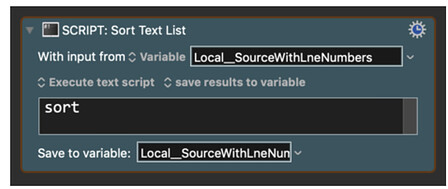Thank you very much @JMichaelTX
I have a question for @JMichaelTX @drdrang @tjluoma @ComplexPoint
@JMichaelTX brings up an interesting point. In fact he opens a pandora's box, which is to use the simplest fastest tool for the task. In this case it is a one word shell script inside a KBM action.
For a novice, shell scripts are cryptic even though I went so far as to read the take control book on the subject.
In the example below @JMichaelTX uses a one word text transform shell script where I was struggling trying to figure out a regex.
Just as a start, I was wondering where I could find a repertory of very short shell scripts used for the many possible commonly used transformations of selected text. Just a few examples are adding quotes, title care, remove new line feed, remove blank lines, delete tabs, etc etc etc
thanks very much !
